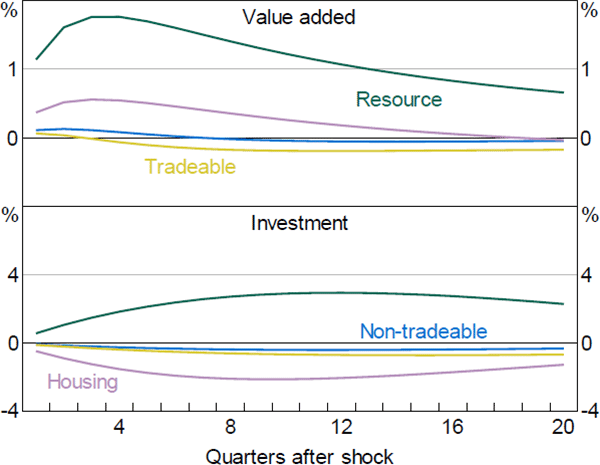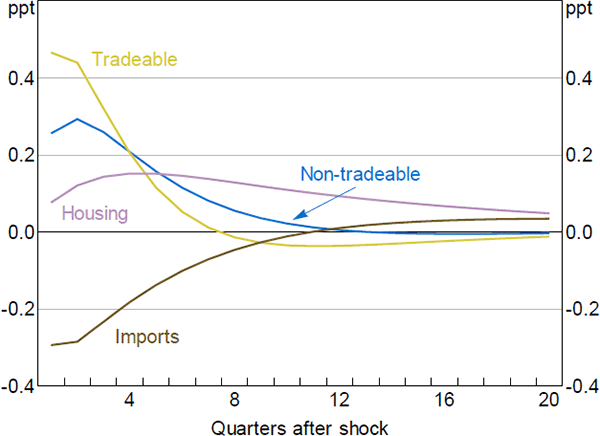RDP 2018-04: DSGE Reno: Adding a Housing Block to a Small Open Economy Model Appendix B: Transmission of Commodity Price Shocks
April 2018
- Download the Paper 1,668KB
We analyse the effects of a 10 per cent increase in commodity prices on real GDP and inflation, which are shown in Figure B1. Higher commodity prices lead to an expansion in the economy; real GDP increases to be around 0.35 per cent above its baseline level. The increase is similar to that predicted by the RSH model. The response of inflation, though, is larger in our model, at least initially, but quickly decays to near zero. Both models' inflation responses are somewhat consistent with Jääskelä and Smith (2013) and Downes, Hanslow and Tulip (2014), who show that higher commodity prices lead to small or even negative responses of inflation.

Note: 10 per cent increase in commodity prices
The responses of sectoral investment and value added are shown in Figure B2. Higher commodity prices lead to increased production in the resource sector. Value added in the housing sector increases, which partly reflects increases in domestic income, while non-tradeable value added is mostly unchanged. Meanwhile, value added in the tradeable sector contracts as the increase in resource prices causes an appreciation of the real exchange rate, making the sector less competitive.
As expected, the expansion in investment is concentrated in the resource sector. The increase, however, occurs slowly: the peak response occurs three years after the shock with resource investment around 3 per cent above baseline. This is consistent with the observation that mining investment was relatively slow to respond to the increase in commodity prices in the mid 2000s (peaking after the peak in the terms of trade). In the housing sector, investment falls moderately. This contraction reflects a mild increase in the cash rate in response to the temporary expansion in activity, as well as increased relative returns to investment in mining capital.

Note: 10 per cent increase in commodity prices
Looking at sectoral inflation (Figure B3), the appreciation in the nominal exchange rate causes a large fall in the rate of inflation of imported goods and services. At the same time, increased domestic demand pushes up prices in other sectors. In aggregate, these responses offset each other to a degree and the overall inflation rate remains muted after the shock, as shown in Figure B1. This is largely consistent with the sectoral response found in the RSH model.

Note: 10 per cent increase in commodity prices